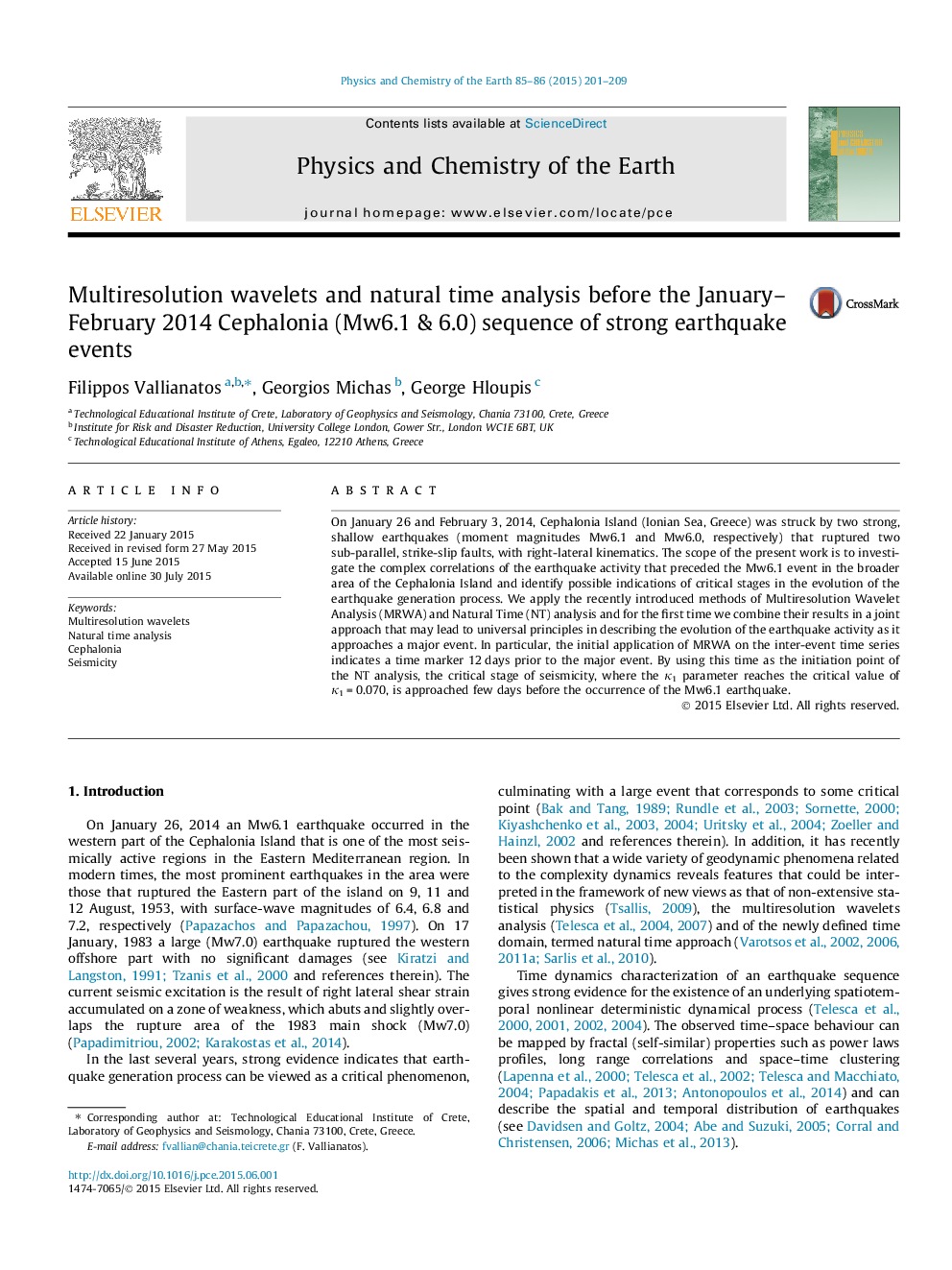| Article ID | Journal | Published Year | Pages | File Type |
|---|---|---|---|---|
| 4720946 | Physics and Chemistry of the Earth, Parts A/B/C | 2015 | 9 Pages |
•The 2014 Cephalonia strong earthquakes present complex seismicity correlations.•The methods of natural time and multiresolution wavelet analysis introduced.•The observed MRWA anomalies of seismicity are the initiation point for the NTA.•Foreshock seismicity approaches critical stage few days before the main event.
On January 26 and February 3, 2014, Cephalonia Island (Ionian Sea, Greece) was struck by two strong, shallow earthquakes (moment magnitudes Mw6.1 and Mw6.0, respectively) that ruptured two sub-parallel, strike-slip faults, with right-lateral kinematics. The scope of the present work is to investigate the complex correlations of the earthquake activity that preceded the Mw6.1 event in the broader area of the Cephalonia Island and identify possible indications of critical stages in the evolution of the earthquake generation process. We apply the recently introduced methods of Multiresolution Wavelet Analysis (MRWA) and Natural Time (NT) analysis and for the first time we combine their results in a joint approach that may lead to universal principles in describing the evolution of the earthquake activity as it approaches a major event. In particular, the initial application of MRWA on the inter-event time series indicates a time marker 12 days prior to the major event. By using this time as the initiation point of the NT analysis, the critical stage of seismicity, where the κ1 parameter reaches the critical value of κ1 = 0.070, is approached few days before the occurrence of the Mw6.1 earthquake.
